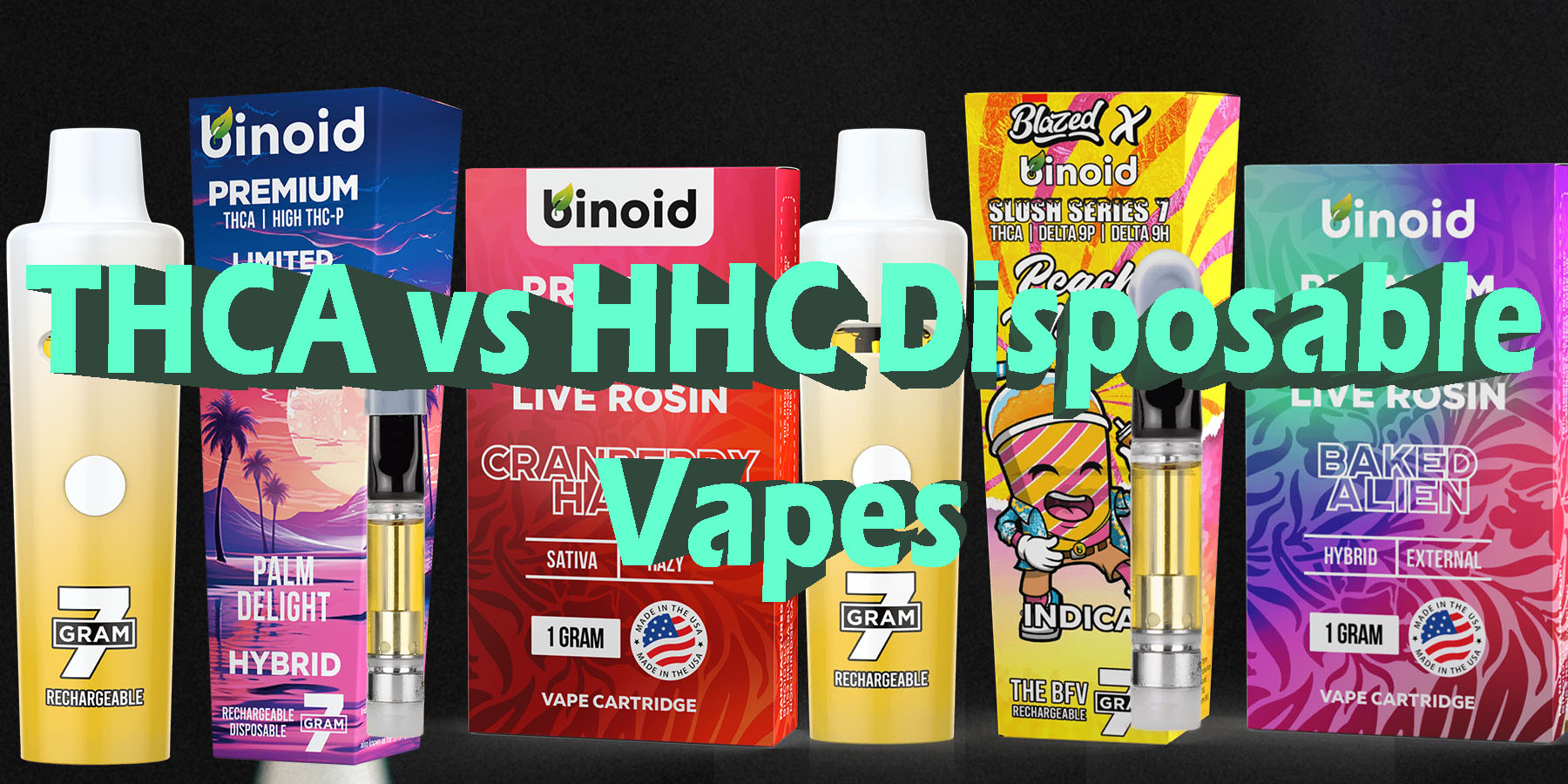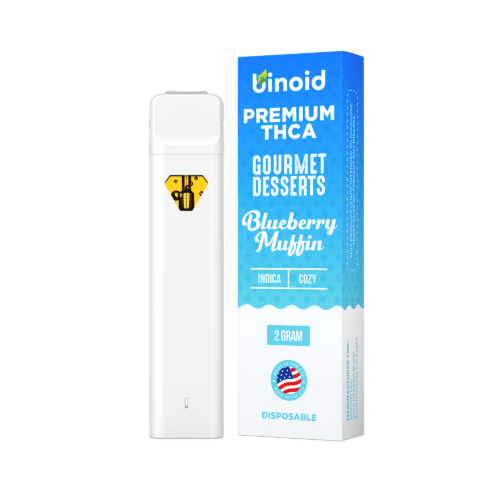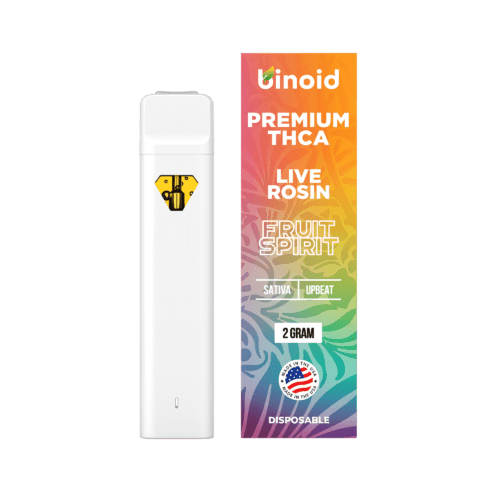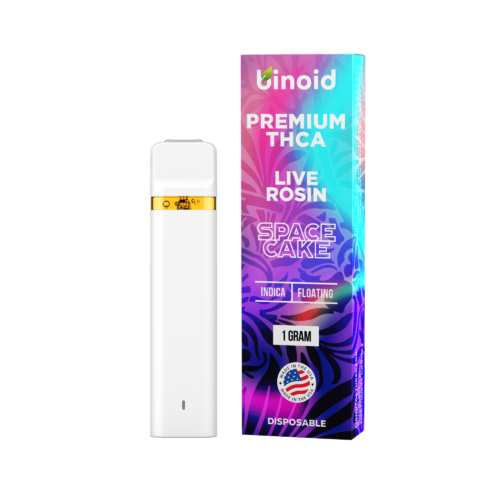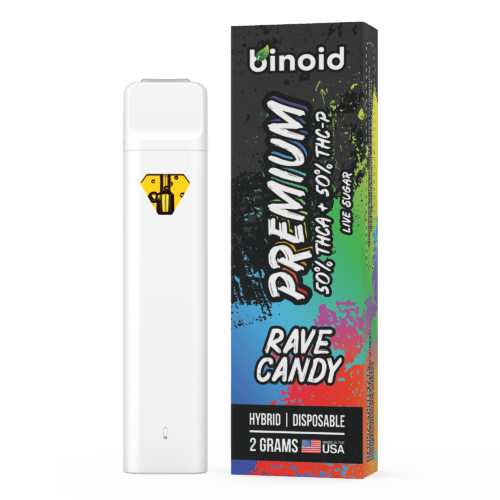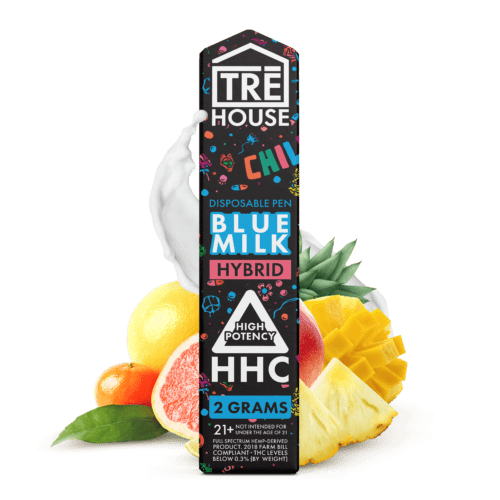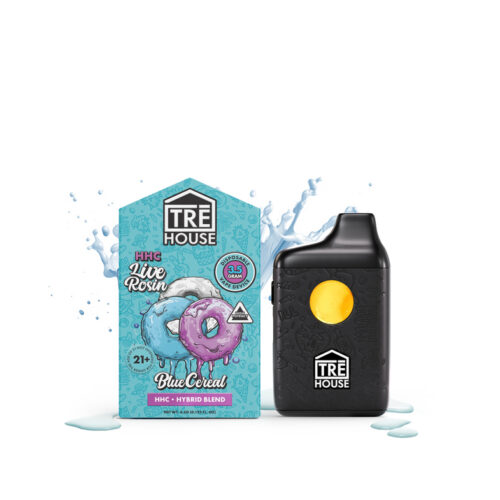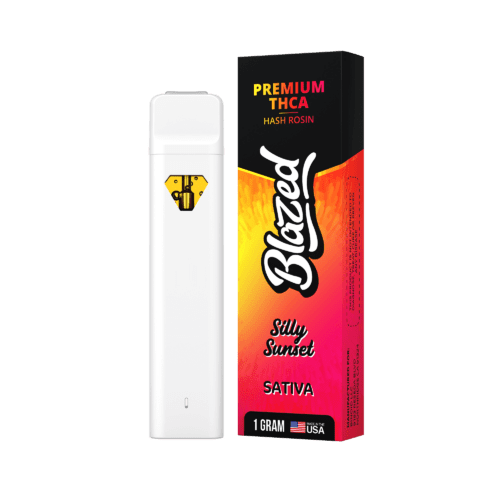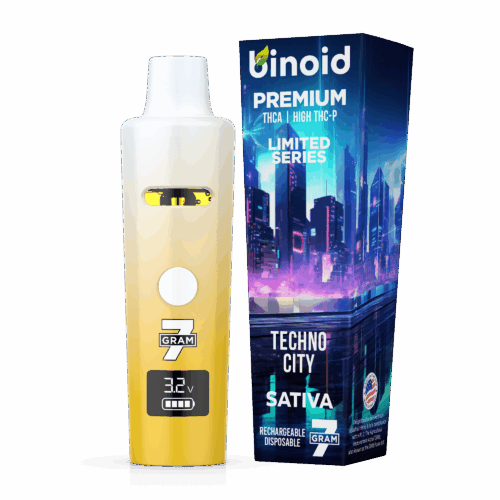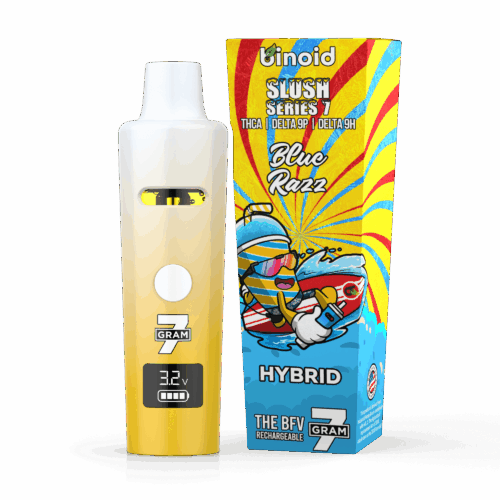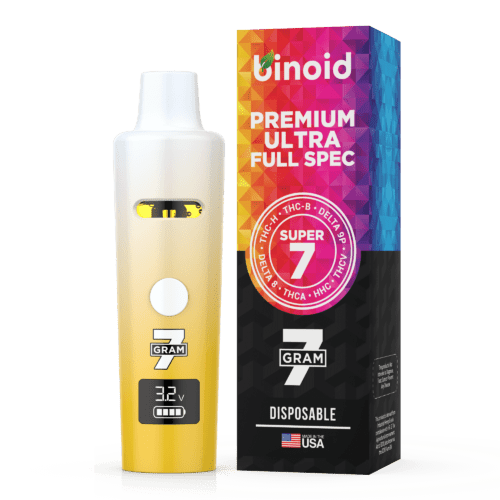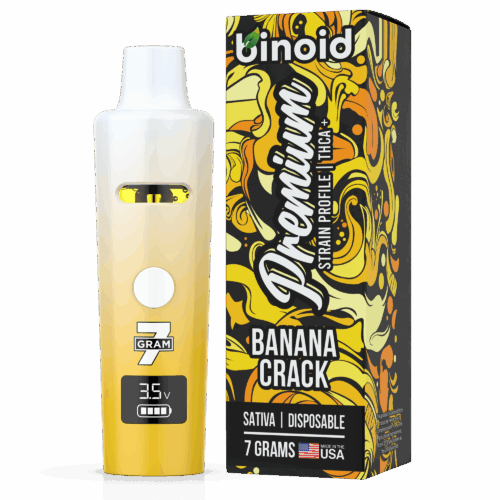In the ever-advancing world of hemp-derived cannabinoids, the modern enthusiast is presented with a sophisticated spectrum of choices, each offering a distinct path to a desired experience. We have moved beyond simple potency metrics into a more nuanced appreciation of molecular chemistry, where the very structure of a compound defines its unique character. This new landscape requires a deeper look at how different cannabinoids achieve their celebrated effects, whether through natural transformation or scientific innovation. Within this context, the convenience and precision of disposable vapes provide the perfect platform for exploring these powerful molecules.
This brings us to a compelling and highly relevant comparison between two titans of the contemporary market, each beloved for its potent, euphoric effects, yet operating on fundamentally different principles. The matchup between THCA disposable vapes and HHC disposable vape is an essential guide for the discerning user, illuminating the choice between a classic, powerful experience unlocked by heat and a uniquely stable, blissful journey born from modern chemistry.
To Buy Cannabinoid Disposable Vapes Click Here
Recommended products
What are Cannabinoids?
At their most fundamental level, cannabinoids are a class of naturally occurring chemical compounds found predominantly in the resinous trichomes of the cannabis sativa plant, a species that includes both legally distinct hemp and marijuana varieties. These remarkable and structurally diverse molecules are the primary drivers behind the plant’s vast array of effects, interacting in complex and multifaceted ways with the body’s internal systems to produce a wide spectrum of physical and cognitive experiences.
The cannabis plant operates as a veritable phytochemical factory, capable of biosynthesizing over one hundred different cannabinoids, each possessing a unique three-dimensional molecular structure and, consequently, a distinct profile of effects that sets it apart from its botanical brethren. The most historically famous and culturally significant of these is undoubtedly Delta 9 THC (Delta-9-tetrahydrocannabinol), the compound primarily responsible for the traditional, potent intoxicating effects long associated with marijuana.
However, the world of cannabinoids is far more diverse and nuanced than this single molecule, encompassing a broad family of non-intoxicating compounds like Cannabidiol (CBD) and Cannabigerol (CBG), as well as a growing host of other fascinating minor cannabinoids like CBN, THCV, and CBC that are now stepping into the scientific and consumer spotlight thanks to incredible advancements in agricultural cultivation and laboratory extraction and conversion science.
The historical journey to understanding these powerful plant-derived compounds is a captivating story of scientific dedication, serendipitous discovery, and paradigm-shifting revelations that have fundamentally altered our understanding of human biology. For millennia, humanity across countless cultures utilized the cannabis plant for ritual, social, and wellness purposes without any clear understanding of its underlying mechanisms of action, attributing its effects to mystic or spiritual properties. The 20th Century, however, finally began to pull back the curtain and bring these long-held secrets into the clarifying light of modern chemistry.
The groundbreaking and Nobel-worthy work of Israeli chemist Dr. Raphael Mechoulam and his dedicated research team at the Weizmann Institute of Science in the 1960s led to the first-ever isolation and complete chemical synthesis of Delta 9 THC, finally and definitively identifying the specific molecule behind the plant’s renowned psychoactive properties. This monumental discovery was the key that unlocked the door to an entirely new and unexplored field of neuropharmacology, prompting a cascade of further research that would eventually lead to an even more astonishing discovery: the body’s own internal, native cannabinoid system.
This previously unknown biological system, a vast and intricate network of cellular communication and signaling, was fittingly named the endocannabinoid system (ECS) in honor of the very plant that had led to its discovery. The ECS, which is now understood to be composed of a triad of core components—receptors, enzymes, and internally produced cannabinoids known as endocannabinoids—acts as a master regulator or homeostatic modulator, helping to maintain a state of internal balance across nearly all of our most critical physiological systems, from the central nervous system to the immune system. The two primary endocannabinoids produced by our own bodies are anandamide, famously nicknamed the “bliss molecule” for its role in mood, and 2-arachidonoylglycerol (2-AG).
These endocannabinoids are synthesized on demand and interact with a network of specialized receptors, the two most well-studied of which are the CB1 receptors, which are densely concentrated in the brain and central nervous system, and the CB2 receptors, which are found predominantly throughout the peripheral nervous system and on the surface of immune cells. The entire ECS works tirelessly to ensure that our internal environment remains stable and functions optimally.
Phytocannabinoids, the cannabinoids derived from plants like cannabis, possess the remarkable ability to interact directly with our native ECS because their molecular shapes are strikingly similar to our own endocannabinoids, allowing them to bind to, influence, or block the very same CB1 and CB2 receptors. It is this intricate dance, this lock-and-key interaction between plant-derived molecules and our own internal biology, that unlocks the potential for the profound experiences of euphoria, deep relaxation, and heightened sensory perception that cannabinoids can offer. The manner, location, and intensity with which a specific cannabinoid binds to these receptors is the primary factor that dictates its specific effects on the mind and body.
Furthermore, this interaction is not just a simple on/off switch; it is a complex modulation that can be powerfully influenced by the presence of other botanical compounds, leading to the fascinating and widely studied concept known as the “entourage effect.” This theory posits that cannabinoids work in a complex synergy with other plant compounds, like aromatic terpenes and antioxidant flavonoids, to produce a more robust, holistic, and nuanced outcome than any single, isolated compound could ever hope to achieve on its own, emphasizing the importance of whole-plant chemistry.
What are Cannabinoid-Infused Disposable Vapes and How are They Typically Created?
Cannabinoid-infused disposable vapes represent a pinnacle of consumer convenience and sophisticated modern engineering within the rapidly evolving hemp and cannabis markets, offering a seamless, intuitive, and highly accessible way to experience a wide array of novel compounds. At their most basic, they are single-use, all-in-one electronic devices meticulously designed for the efficient inhalation of cannabinoid-rich vapor, thereby eliminating the numerous complexities and the steep learning curve associated with more traditional consumption methods or advanced, reusable vaporizer systems.
Unlike more complex reusable vape setups that require the separate purchase and maintenance of batteries, tanks, atomizers, and coils, a disposable vape comes fully assembled, pre-charged, and precisely pre-filled with a specific amount of cannabinoid distillate, rendering it ready for immediate use straight out of its protective packaging.
This brilliantly streamlined, user-friendly design completely eliminates the need for any ongoing maintenance, messy refilling, or technical knowledge, making it an incredibly accessible entry point for newcomers and a supremely hassle-free option for seasoned connoisseurs alike who place a high value on simplicity, discretion, and portability in their daily lives. The user simply inhales from the mouthpiece, which in most modern models contains a sensor that activates the internal battery, which in turn heats the coil and instantaneously vaporizes the oil, delivering a smooth, flavorful, and inhalable mist directly to the lungs for exceptionally rapid absorption into the bloodstream and a quick onset of effects.
Now, the contemporary market for disposable vapes is characterized by a truly remarkable and ever-growing diversity in aesthetic design, advanced functionality, and construction materials, catering to a vast and varied range of consumer preferences and leveraging the latest technological advancements in microelectronics and material science. This incredible variety ensures that users can find a device that not only delivers their desired cannabinoid experience with precision but also perfectly suits their personal aesthetic, ergonomic preferences, and practical day-to-day needs. The different types and kinds of disposable vapes available today can be broadly categorized and differentiated by several key features that define their performance and user experience:
Shapes & Sizes: The physical form factor of disposable vapes has evolved significantly from the rudimentary and often inefficient early “cig-a-like” models. Today, by far the most common and popular shape is the sleek, minimalist, and discreet pen-style vape, highly prized for its exceptional portability and its unobtrusive resemblance to a simple writing instrument or stylus. However, innovative manufacturers are increasingly experimenting with a wide variety of other designs, such as compact and palm-friendly box or pod-style devices, which often house larger, more powerful batteries and significantly bigger oil reservoirs for greatly extended use between charges or disposal. Some forward-thinking brands even offer unique, ergonomically shaped disposables meticulously designed for maximum comfort in the hand and a more substantial, premium feel during operation.
Construction Types: The specific materials used in the construction of a disposable vape’s chassis play an absolutely crucial role in its overall durability, its tactile feel in the hand, and its perceived quality, often serving as a key differentiator between entry-level and premium product tiers. Many mass-market models are constructed from durable and lightweight hard plastics like polycarbonate (PC) or PCTG, which are cost-effective and allow for a wide range of colors and finishes. More premium, high-end devices, however, often feature a more robust and luxurious construction, utilizing advanced materials like aircraft-grade aluminum, stainless steel, or die-cast zinc-alloy for the main body. These metal casings not only provide a superior, weightier feel and enhanced durability against drops and daily wear but can also offer better heat dissipation, keeping the device comfortable to hold during prolonged use.
Rechargeable Models: A truly significant and game-changing innovation within the “disposable” category is the widespread introduction of rechargeable models, a feature that has now become nearly ubiquitous for any device containing more than a single gram of oil. While the device is still intended to be disposed of once the cannabinoid oil is fully depleted, these advanced disposables feature an integrated USB port (typically the modern and convenient USB-C). This critical feature allows the user to easily recharge the battery if it happens to run out of power before the oil is fully consumed. This is particularly important for larger capacity disposables (containing 2, 3, 5, or even 7 grams of oil), as it completely eliminates the risk of product being wasted due to a depleted battery, guaranteeing the user can enjoy every last valuable drop of the cannabinoid distillate they paid for.
Draw-Activation and/or Button-Activation: The activation mechanism is a key aspect of the user experience and often dictates the device’s feature set and safety profile. The vast majority of disposable vapes are draw-activated (also known as “auto-draw”), which means they have no external buttons and are activated simply and intuitively by inhaling from the mouthpiece. This design offers the ultimate in simplicity and closely mimics the natural action of smoking. In contrast, some models are button-activated, requiring the user to press and hold a button while inhaling. While slightly less intuitive for absolute beginners, button activation offers far more user control, effectively prevents accidental activation in a pocket or bag, and is often a necessary prerequisite for incorporating more advanced features such as pre-heating functionality or variable voltage settings.
Some that Come with Advanced Features & Functionalities: In an effort to stand out within a fiercely competitive market, many leading brands are now incorporating sophisticated features that were once exclusively found in expensive, advanced, non-disposable vaporizer systems. A very common and highly useful feature is a pre-heat function, typically activated by two or three quick clicks of a button, which gently warms the often-thick cannabinoid oil to an optimal viscosity for a smoother, fuller, and more satisfying first draw, a feature that is especially useful in colder ambient temperatures. Another increasingly popular advanced option is variable voltage or power settings, which allows the user to cycle through different temperature levels with a few button clicks. A lower temperature setting will better preserve the delicate and complex terpene flavors, while a higher temperature setting will produce larger, denser, and more robust vapor clouds for a more powerful effect. Some of the most cutting-edge disposables now even include small, bright OLED or LCD screens that display critical information like the precise remaining battery percentage, the current power setting, and even an e-liquid level indicator.
The creation of a high-quality cannabinoid-infused disposable vape is a meticulous, multi-stage, and capital-intensive process that seamlessly combines precision micro-engineering, sophisticated botanical extraction science, and careful formulation chemistry, all governed by rigorous quality control protocols at every step. This complex journey from raw materials to a finished consumer product can be logically broken down into three primary, interdependent phases: the manufacturing of the physical vape device hardware, the creation of the potent cannabinoid-infused vape oil, and finally, the high-precision assembly and compliant packaging of the finished product.
Recommended products
Part 1: The Production of the Disposable Vape Device
The physical vape device itself, despite its simple appearance, is a miniature marvel of modern technology. Its production is a complex process of global component sourcing and precision robotic assembly that demands deep expertise in electronics, materials science, and industrial design. It begins with an intensive design and engineering phase, where teams of engineers determine the ideal form factor, battery capacity (mAh), atomizer resistance (ohms), and airflow characteristics required to efficiently and flavorfully vaporize a specific viscosity of oil.
The outer housing, or chassis, is then mass-produced using techniques like high-pressure injection molding for plastics or high-precision CNC machining and anodizing for premium aluminum devices. Simultaneously, the electronic heart of the device is sourced from specialized manufacturers and assembled.
This includes a certified lithium-ion polymer (LiPo) battery equipped with a protection circuit module (PCM) for safety, a microcontroller unit (MCU) or chipset that acts as the device’s brain, and the all-important atomizer. The atomizer’s core is a resistance wire (typically Kanthal) wrapped into a coil and paired with a wicking material. Increasingly, higher-quality disposables are using porous ceramic wicks, which can withstand high temperatures without combusting, thus providing a purer, cleaner flavor profile. These assembled components are then brought together on a sterile assembly line and individually tested for electronic functionality.
Part 2: The Creation of the Cannabinoid-Infused Vape Oil
This part of the process is a sophisticated blend of advanced agriculture and cutting-edge chemistry, transforming raw hemp plant material into a highly potent, purified, and safe-to-inhale oil. It starts with sourcing high-quality, legally compliant hemp biomass, often from farms using organic or regenerative practices to ensure the material is free from pesticides and heavy metals.
Once harvested, the hemp is dried and subjected to a primary extraction process, with supercritical CO2 and cryogenic ethanol extraction being the industry gold standards for their efficiency and safety. The resulting crude oil, while rich in cannabinoids, is unrefined and must undergo several crucial purification steps. This includes winterization, where the crude oil is mixed with ethanol and frozen to cause fats and waxes to congeal and be filtered out.
For a target cannabinoid like Delta 8, the next step involves a chemical process called isomerization, where purified, hemp-derived CBD is safely converted into Delta 8 THC using an acid catalyst in a controlled laboratory environment. The resulting mixture is then thoroughly cleansed of all solvents and byproducts using multi-stage, short-path distillation under a deep vacuum. This process separates and purifies the cannabinoids based on their different boiling points, resulting in a final distillate of exceptional purity, often exceeding 95% potency. The final step is formulation, where this incredibly thick, clear distillate is gently heated and infused with a precisely measured blend of cannabis-derived or botanical terpenes to create the desired strain-specific flavor and effect profile.
Part 3: Bringing It All Together
The final stage is a delicate marriage of precision-engineered hardware and meticulously formulated oil, a process that demands the sterile conditions of a laboratory and the efficiency of modern automated manufacturing, all conducted within a highly controlled ISO-certified cleanroom environment to prevent any airborne contamination.
The purified and formulated cannabinoid oil is loaded into automated, high-precision filling machines, such as piston fillers or peristaltic pumps, which are calibrated to dispense the exact volume of oil into each device with microscopic tolerance. The empty, electronically tested disposable vape devices move along a conveyor belt to the filling station, where a stainless-steel nozzle injects the oil directly into the device’s sealed reservoir. Immediately after filling, the device is permanently capped and sealed with a press-fit mouthpiece containing multiple silicone gaskets to create a truly hermetic seal.
This critical step not only prevents the valuable oil from leaking but also protects it from long-term exposure to oxygen, which can degrade the cannabinoids and ruin the delicate terpene flavors. Once sealed, the device undergoes another battery of stringent quality control checks. Most importantly, a statistical sample of the filled devices is sent back to an independent, accredited third-party lab to verify the final potency and purity of the oil inside the finished product. After passing all tests, the disposables are packaged in compliance with all state-specific regulations, often with a QR code linking to the lab report for that specific batch, ensuring full consumer transparency and traceability.
Breaking Down Today’s Cannabinoid Disposable Vapes Matchup: THCA Disposables vs. HHC Disposables
With a foundational understanding of cannabinoid science and vape manufacturing, we can now step into the arena for a fascinating comparison between two of the market’s most popular potent compounds: THCA and HHC. This is a tale of two distinct philosophies of power—one born from the natural, latent potential within the cannabis plant, and the other a product of modern chemistry designed for stability and a unique euphoric profile.
On one side, we have THCA, the direct precursor to the legendary Delta 9 THC, offering an authentic and powerful experience unlocked by the simple application of heat. On the other stands HHC, a hydrogenated cannabinoid celebrated for its impressive shelf-life and effects that many find to be a blissful and balanced journey. Choosing between them requires a careful consideration of one’s preference for either a familiar, classic intensity or a novel, smooth, and resilient high.
Contender #1: THCA Disposables
Stepping onto the scene as a fascinating and potent contender, THCA disposables have captured the attention of cannabis enthusiasts by offering an experience that is both novel in its chemistry and deeply familiar in its effects. These devices are designed for users who seek the authentic, powerful experience of traditional cannabis, made accessible through the federally legal framework of the hemp market. Tetrahydrocannabinolic acid (THCA) is the non-psychoactive precursor to Delta 9 THC, the most famous compound in cannabis.
In its raw form, THCA does not produce intoxicating effects; however, it undergoes a magical transformation when heated—a process known as decarboxylation. When you use a THCA disposable vape, the device’s heating coil instantly converts the THCA into potent Delta 9 THC right before you inhale. This means a THCA disposable is, for all intents and purposes, a device that delivers a true Delta 9 THC experience, celebrated for its robust euphoria, creative stimulation, and deep relaxation.
The profound magic and legal ingenuity of a THCA disposable vape lie entirely in the elegant and efficient chemical process of decarboxylation. In the living cannabis plant, cannabinoids are biosynthesized and exist primarily in their raw, acidic forms, such as THCA and CBDA. These acidic molecules have an extra carboxyl group (COOH) chemically attached to their main structural ring. The presence of this bulky atomic group physically prevents the molecule from effectively binding to the CB1 receptors in the brain, which is precisely why consuming raw, unheated cannabis flower does not produce any psychoactive effects. When sufficient heat is applied, as from the coil of a vaporizer, this carboxyl group is rapidly cleaved off and released as carbon dioxide (
CO2), instantly transforming the large, inactive molecule (THCA, C22H30O4) into its much more compact, psychoactive, neutral form (Delta 9 THC, C21H30O2). A modern vaporizer is the perfect delivery system for this process, as the atomizer provides the precise, controlled, and instantaneous heat required for a near-perfect and highly efficient conversion upon demand. This foundational scientific principle allows these products to be legally produced, marketed, and sold as federally compliant “hemp” products (containing less than 0.3% Delta 9 THC in their pre-vaped state), while still delivering a powerful and authentic Delta 9 THC experience to the end user.
Recommended products
The consumer market for THCA disposables is rapidly expanding and maturing, with a growing number of reputable brands focusing on delivering an authentic, clean, and high-quality experience that directly rivals what one might find in a state-licensed traditional cannabis dispensary. The formulations for these products often prioritize extreme purity and the careful preservation of the natural plant compounds to deliver the most robust and flavorful effects possible. The different kinds and types of THCA disposables that are available clearly reflect this deliberate and overarching focus on delivering an authentic, controllable, and high-intensity experience to a discerning and knowledgeable audience:
Shapes & Sizes: THCA disposables are now readily available in the full and diverse spectrum of modern vape form factors, ranging from ultra-portable and discreet vape pens to larger, high-capacity, and feature-rich box-style units. Given the high value and extreme potency of premium THCA extracts, these disposables often come in generous 1-gram, 2-gram, or even larger sizes, and are almost universally equipped with high-quality rechargeable batteries to ensure the user can consume every last bit of the valuable oil
How They’re Constructed: Because THCA products are very often marketed as a premium, top-shelf category within the hemp space, their physical construction quality tends to be exceptionally high. It is very common to find these disposables housed in durable, beautifully finished metal-alloy chassis or high-grade, impact-resistant polycarbonate shells. The industrial designs frequently emphasize a solid, reliable, and premium feel in the hand and feature high-quality internal components, such as advanced ceramic core atomizers, to ensure the clean, efficient, and flavorful vaporization of the valuable and often thick extract.
Rechargeable or Non-Rechargeable: Due to the high cost of the raw materials and the desire to provide a premium user experience, virtually all THCA disposables currently on the market are rechargeable. The extracts used, especially those containing delicate and expensive live resin or live rosin, are considered the pinnacle of hemp products, and manufacturers go to great lengths to ensure that a dead battery will never be the reason a consumer cannot finish the product. Modern USB-C ports have become the prevailing industry standard, offering fast, reliable, and convenient charging.
Draw-Activated and/or Button-Activated: Both simple draw-activated and more complex button-activated models are widely available to suit different user preferences. Draw-activated disposables offer the ultimate in simplicity and ease of use, making them perfect for beginners. In contrast, button-activated devices provide an essential extra layer of safety against accidental firing and are often necessary for incorporating and controlling advanced features like pre-heating, which can be absolutely crucial for properly vaporizing very thick THCA distillates or live resins without clogging.
Possible Advanced Features & Functionalities: Advanced, user-controlled features are very common and highly beneficial for high-potency THCA vapes. A pre-heat function is considered by many to be almost essential to ensure smooth, consistent, and full-bodied vapor production from the very first puff. Variable voltage settings are also a highly prized feature, as they allow users to meticulously tailor their experience—a low setting for slowly savoring the rich, complex terpene profile of a live resin, or a high setting for producing dense, powerful, and fast-acting clouds of vapor.
Potential Use of Live Resin or Live Rosin: This is the area where premium THCA products truly distinguish themselves and shine. Many of the best THCA disposables are not just filled with a simple distillate and botanical terpenes, but with authentic, full-spectrum live resin or solventless live rosin. These highly sought-after extracts, derived from fresh-frozen cannabis plants, contain the full, unaltered, and vibrant spectrum of natural terpenes and minor cannabinoids. This results in an incredibly authentic, aromatic, and flavorful experience that perfectly captures the true essence of the source cannabis strain, delivering a powerful and deeply nuanced entourage effect that is impossible to replicate with simpler formulations.
Strain-Infused: Strain specificity is absolutely paramount in the competitive THCA market. Because the primary goal is to perfectly replicate the traditional, high-quality cannabis experience, these disposables are meticulously formulated with terpenes to mimic both classic and exotic cannabis strains with incredible accuracy. This allows users to select from iconic and energizing Sativas like Jack Herer for a creative, cerebral journey; potent and tranquilizing Indicas like Northern Lights for profound, full-body relaxation; or famously balanced Hybrids like GG4 for a complex and multifaceted blend of both cerebral and physical effects.
Occasionally Combined with Certain Mushrooms: While still far less common than in the more established Delta 8 space, some adventurous and forward-thinking brands are beginning to experiment with blending their potent THCA extracts with various functional mushroom extracts. The primary goal of these niche products is to create unique, targeted, and synergistic experiences, though this remains a highly experimental and still-developing segment of the broader alternative products market.
Sometimes Combined with Other Cannabinoids: Although many THCA disposables aim for a pure, unadulterated, strain-specific experience, blending with other cannabinoids is also a common and effective formulation strategy. These carefully crafted blends are often designed to strategically enhance, modulate, or complement the core Delta 9 THC effects that result from the THCA conversion:
Non-Intoxicating: Adding a significant ratio of CBD to a THCA blend is a popular strategy used to help soften the sometimes-intense psychoactivity and sharp “edges” of the resulting Delta 9 THC, potentially reducing the likelihood of unease or paranoia for some sensitive users while adding its own unique calming and centering properties to the mix.
Mild Potency: Blending THCA with less common cannabinoids like THCV might be done to add a specific energetic, focus-enhancing, or appetite-suppressing quality to the overall experience, thereby creating a more focused, productive, and uplifting effect profile that is ideal for daytime use.
Moderate Potency: THCA is now frequently blended with its milder isomer, Delta 8. This popular combination creates a more layered and dynamic high, where the user might feel the gentle, relaxing onset of the Delta 8 before the more powerful, euphoric, and cerebrally-focused effects of the converted Delta 9 THC fully take hold.
Strong Potency: To create the most intensely potent products that are legally possible within the hemp framework, some manufacturers are creating “power blends” that combine THCA with other ultra-potent cannabinoids like THC-P or THC-H. These disposables are designed exclusively for users with the highest of tolerances and aren’t recommended for beginners.
The overall effects of a THCA disposable vape are, quite simply, the effects of Delta 9 THC. Upon inhalation, the user experiences the classic cannabis high, known for its significant psychoactive properties. This typically includes a powerful sense of euphoria, heightened sensory perception (brighter colors, richer sounds), creative and abstract thinking, and often, a case of the giggles. The specific character of the ‘high’ is heavily influenced by the strain’s terpene profile.
A Sativa-based THCA disposable can produce a soaring, energetic, and cerebral experience that is fantastic for creative pursuits or socializing. Conversely, an Indica-dominant disposable will deliver a profoundly relaxing and sedating body high, ideal for unwinding in the evening and enjoying a state of deep tranquility. When THCA is combined with live resin, the experience is elevated to its peak, delivering not only potent effects but also an incredibly rich and authentic flavor that is true to the specific cannabis strain from which it was extracted.
Recommended products
Pros & Cons
The unique chemical and legal nature of THCA—being a federally compliant hemp compound in the package but delivering a powerful, classic Delta 9 THC experience upon use—comes with a very distinct and important set of pros and cons that any potential user must carefully consider before making a purchase.
Pros:
Authentic Delta 9 THC Effects: The single most significant advantage of THCA disposables is that they provide the genuine, potent, and unadulterated effects of classic Delta 9 THC. For the vast number of users who prefer the traditional cannabis experience, this is unequivocally the most authentic and satisfying option available in the entire hemp-derived market, offering the familiar potency, character, and nuance of high-quality traditional marijuana.
High Potency: The instantaneous chemical conversion of THCA to Delta 9 THC upon heating results in a powerful and robust psychoactive experience. This makes it an absolutely excellent choice for experienced cannabis users or for those individuals who have developed a high tolerance over time and may now find that milder cannabinoids like Delta 8 are simply insufficient to meet their needs or provide the desired level of effect.
Wide Strain Variety: The rapidly maturing THCA market places an extremely strong emphasis on strain integrity and authenticity. As a result, consumers can now find a vast and growing selection of disposables featuring highly accurate terpene profiles from legendary and sought-after cannabis strains. This allows them to precisely choose between uplifting Sativas, relaxing Indicas, and balanced Hybrids to perfectly tailor the experience to their exact preferences and intentions.
Enhanced by Live Resin/Rosin: The THCA molecule pairs exceptionally well with full-spectrum, high-terpene extracts like live resin and solventless live rosin. This potent combination delivers a demonstrably superior experience in both the richness of its flavor and the complexity of its effects, providing the most authentic and complete representation of the cannabis plant’s incredible aromatic and psychoactive potential.
Fast-Acting Delivery: Like all vaping products, THCA disposables offer a very rapid and predictable onset of effects, which are typically felt within just a few minutes of inhalation. This crucial feature allows users to carefully and responsibly titrate their dose, taking small, measured puffs and waiting to accurately gauge the intensity before consuming more. This provides a much greater degree of control and safety compared to slower-acting methods like edibles.
Federal Legality (as THCA): Under the current interpretation of the 2018 Farm Bill, the THCA compound itself is not chemically Delta 9 THC. As long as the final product contains less than 0.3% Delta 9 THC by dry weight before it is heated, it is considered a federally legal hemp product. This legal distinction, often referred to as a “loophole,” has made authentic THC experiences widely and legally accessible in many states where recreational cannabis remains illegal.
Potent Entourage Effect: When THCA is vaped in a high-quality live resin or full-spectrum formulation, the user benefits from a truly robust and synergistic entourage effect. The powerful effects of the resulting Delta 9 THC work in beautiful harmony with a full suite of minor cannabinoids and a rich, complex profile of natural, cannabis-derived terpenes, creating a more complex, nuanced, effective, and well-rounded experience.
Familiarity for Traditional Users: For the millions of individuals who are already accustomed to consuming traditional cannabis products purchased from dispensaries, THCA disposables offer a completely seamless and intuitive transition into the federally legal hemp-derived market. The effects, the potency levels, and the strain profiles are exactly what they are used to, completely eliminating the guesswork and uncertainty that might come with exploring other, more exotic alternative cannabinoids.
Cons:
Legally Ambiguous: While the THCA compound itself is currently considered federally legal hemp, it readily and efficiently converts to Delta 9 THC, which remains a Schedule I controlled substance at the federal level. This creates a significant and precarious legal gray area. Some states have already taken legislative or regulatory action to close this “loophole” by specifically banning or regulating THCA products, or by implementing “total THC” testing standards that account for the potential conversion of THCA into Delta 9 THC.
Can Be Too Intense for Beginners: The high potency of the resulting Delta 9 THC can easily be overwhelming, uncomfortable, or even frightening for new users or for any individuals with a naturally low tolerance for THC. The powerful and sometimes disorienting psychoactive effects can occasionally lead to feelings of intense unease, paranoia, or the deeply unsettling sensation of being uncomfortably “too high” if the product is not consumed with extreme caution and respect.
Potential for Paranoia and Unease: Delta 9 THC is well-known for its potential to induce feelings of anxiety or paranoia in some users, particularly at higher doses. Individuals who are prone to these side effects should approach THCA disposables with extreme caution and start with very small doses.
Guaranteed to Cause a Failed Drug Test: Using a THCA disposable vape will absolutely result in a failed drug test for THC. Standard drug screenings test for THC metabolites and thus, cannot distinguish between Delta 9 THC derived from hemp (THCA) and that from marijuana. Anyone subject to drug testing should avoid these products entirely.
Recommended products
Contender #2: HHC Disposables
Emerging from the cutting edge of cannabinoid science, HHC disposables have carved out a unique and compelling space in the hemp market, appealing to both curious newcomers and seasoned enthusiasts alike. These devices feature Hexahydrocannabinol (HHC), a cannabinoid that offers a novel experience often described as a balanced and pleasant midpoint between the gentle calm of Delta 8 and the iconic intensity of Delta 9 THC.
The allure of HHC disposables lies in this unique positioning and in the chemical stability of the molecule itself, which gives it an exceptional shelf-life and resistance to degradation from heat and UV light. For many consumers, an HHC disposable represents a fantastic “sweet spot,” providing a noticeable and satisfying euphoria that is both more pronounced than Delta 8 and potentially less edgy or overwhelming than traditional Delta 9 THC. It offers a reliable and consistent way to elevate one’s mood, stimulate creativity, and enjoy a blissful state of relaxation that feels both familiar and refreshingly new.
At its chemical core, HHC (Hexahydrocannabinol) is a hydrogenated form of THC. This means that while it often starts as a naturally occurring cannabinoid like Delta 9 THC, it undergoes a sophisticated laboratory process called hydrogenation, first discovered by American chemist Roger Adams in the 1940s. Conceptually similar to the process that turns vegetable oil into margarine, hydrogenation involves saturating the molecule with hydrogen atoms, typically in the presence of a metal catalyst like palladium.
During this reaction, a key double bond in the THC molecule’s top ring structure is broken and replaced with hydrogen. This seemingly simple change has profound implications for its durability; by removing this reactive double bond, the HHC molecule becomes significantly more stable and far less susceptible to oxidation and degradation from heat and UV light. Unlike THC, which can lose its potency over time as it degrades into the less psychoactive CBN, HHC’s saturated structure allows it to maintain its integrity and effects for much longer.
This hydrogenation process invariably results in a mixture of two different types of HHC molecules, known as epimers: 9R HHC and 9S HHC. Think of the body’s endocannabinoid receptors as a specific lock; the 9R HHC molecule has the correct three-dimensional shape to fit perfectly into this lock, allowing it to bind effectively and produce noticeable effects. Conversely, the 9S HHC molecule has a slightly different shape that doesn’t fit the receptor lock nearly as well, making it much less active. Therefore, the ratio of the active 9R HHC to the less-active 9S HHC in a final product is a crucial factor that directly dictates the overall potency and the quality of the effects in an HHC disposable, making it a key indicator of a product’s quality.
The rapidly growing market for HHC disposable vapes is a testament to its popularity, offering a wide and expanding selection of devices, potent formulations, and unique flavor profiles designed to satisfy a broad range of consumer tastes. This variety allows users to find an HHC experience that is perfectly tailored to their preferences. The different kinds and types of HHC disposables available can be distinguished by a number of key characteristics:
Shapes & Sizes: HHC disposables are available in all the modern form factors consumers expect, from the ever-popular slim and discreet vape pens to larger, more robust box-style or pod-style devices. Given HHC’s satisfying potency, even smaller 1-gram disposables offer a substantial number of sessions, while larger 2-gram, 3-gram, or even bigger models are becoming increasingly common, always equipped with a rechargeable battery to ensure no product is wasted.
How They’re Constructed: Brands typically position HHC products as a modern and sophisticated choice, and the device construction often reflects this. It is common to find HHC disposables housed in durable metal-alloy chassis or made from high-grade, resilient plastics. The designs often prioritize a premium feel, reliable airflow, and quality internal components like ceramic atomizers to ensure a clean and flavorful vaporization of the HHC oil.
Rechargeable or Non-Rechargeable: Given the value of HHC distillate and the market’s move toward larger-capacity devices, virtually all reputable HHC disposables are now rechargeable. The inclusion of a USB-C charging port has become the industry standard, providing fast and convenient recharging and preventing the frustrating issue of a dead battery trapping valuable oil inside the device.
Draw-Activated and/or Button-Activated: Both simple draw-activated models and more feature-rich button-activated HHC disposables are common. Draw-activated devices offer the ultimate in convenience and ease of use, making them an excellent choice for straightforward sessions. Button-activated models provide an extra layer of safety against accidental activation and are necessary for enabling advanced features like pre-heating and variable voltage settings.
Possible Advanced Features & Functionalities: Advanced features are particularly useful for optimizing the HHC experience. A pre-heat function can be essential for ensuring the sometimes-thick HHC oil is at the perfect viscosity for a smooth draw, preventing clogs. Variable voltage settings are also a prized feature, allowing users to choose between a low-temperature puff that emphasizes flavor or a high-temperature hit that produces larger clouds and more intense effects.
Potential Use of Live Resin or Live Rosin: The pairing of HHC’s unique effects with the authentic, full-spectrum terpene profiles of live resin or live rosin is a popular choice for connoisseurs. This combination aims to deliver a top-tier sensory experience, where the blissful effects of HHC are perfectly complemented by the rich, complex, and strain-specific flavors of these premium extracts, resulting in a truly superior product.
Strain-Infused: As with other popular cannabinoids, the vast majority of HHC disposables are infused with specific terpene profiles to mimic well-known cannabis strains. This allows users to carefully guide their experience by choosing an uplifting Sativa for daytime energy and creativity, a relaxing Indica for evening tranquility, or a balanced Hybrid for a versatile, all-purpose effect that combines the best of both worlds.
Occasionally Combined with Certain Mushrooms: The trend of blending functional mushroom extracts with cannabinoids is also present in the HHC space. While still a niche category, some brands offer HHC disposables infused with extracts like Lion’s Mane or Cordyceps, with the goal of creating a unique, synergistic experience that targets a more holistic sense of well-being.
Sometimes Combined with Other Cannabinoids: HHC is an excellent base cannabinoid for creating unique blends and is often combined with other compounds to fine-tune the experience. These blends can be crafted to achieve specific outcomes:
Non-Intoxicating: Adding non-intoxicating cannabinoids like CBD and CBN to an HHC blend can help to balance the experience, potentially adding a layer of calm or promoting relaxation without diminishing the core euphoric effects.
Mild Potency: Blending HHC with milder cannabinoids like THCV and Delta 10 can create a more layered and nuanced high, sometimes described as more energetic or creative than HHC alone, offering a slightly different character to the experience.
Moderate Potency: HHC is frequently blended with moderately potent cannabinoids like Delta 8 and THCA to create a unique entourage effect, where the combined properties of both molecules result in a distinct feeling that neither could produce on its own.
Strong Potency: For users seeking maximum intensity, some manufacturers create powerful blends that combine HHC with a small amount of an even stronger cannabinoid like THC-P or PHC. These products are designed for experienced users with high tolerances.
The overall effects of an HHC disposable vape are often described as being pleasantly euphoric and relaxing, with a profile that sits comfortably between Delta 8 and Delta 9 THC. Many users report a clear-headed, uplifting cerebral experience accompanied by a noticeable sense of physical relaxation, making it a versatile choice for various activities. This baseline experience is then refined by the product’s specific formulation.
A Sativa-dominant HHC disposable can feel particularly energizing and creativity-boosting, while an Indica blend will amplify the cannabinoid’s calming and soothing bodily effects. The inclusion of live resin provides a richer, more authentic flavor and contributes to a more complex, well-rounded feeling. HHC is also a popular choice for blends; combining it with milder cannabinoids can create a more gentle and nuanced experience, while adding a small amount of a more powerful cannabinoid can elevate the intensity for a truly potent effect.
Recommended products
Pros & Cons
HHC disposables, with their unique chemical nature and balanced effects, come with a distinct set of pros and cons that differentiate them from other options on the market. Understanding these points is crucial for anyone considering this novel cannabinoid.
Pros:
Balanced, Enjoyable Effects: The primary advantage of HHC is its “sweet spot” positioning. Many users find its effects to be more potent and euphoric than Delta 8, yet less intense and potentially less likely to induce unease than Delta 9 THC, making it an ideal middle-ground option for those seeking a satisfying but manageable experience.
Exceptional Chemical Stability: The hydrogenation process makes HHC highly resistant to degradation from heat, light, and oxidation. This means HHC disposables have a much longer shelf-life than THC-based products and are less likely to lose potency over time, ensuring a consistent product from the first puff to the last.
Promotes Uplifting Euphoria: HHC is widely reported to produce a significant mood-elevating and euphoric experience that many find to be thoroughly enjoyable. Users often describe the feeling as happy, blissful, and uplifting, making it a popular choice for recreational enjoyment, creative endeavors, and enhancing social activities.
Versatile for Day or Night: Depending on the strain-specific terpene profile that guides its ancillary effects, HHC can be an incredibly versatile cannabinoid. Sativa blends can provide functional, clear-headed energy for daytime tasks and creative projects, while Indica blends offer profound relaxation and tranquility perfect for unwinding in the evening.
Novelty and Exploration: For seasoned cannabis enthusiasts who may feel they have explored all that traditional THC isomers have to offer, HHC presents a genuinely new and different psychoactive landscape. It provides a unique character, depth, and texture of experience that can reinvigorate a sense of novelty, discovery, and appreciation for cannabinoid science.
Potentially More Discreet: While subjective and dependent on the added terpenes, some anecdotal reports suggest that the vapor from HHC may have a less pronounced and lingering cannabis-like aroma compared to traditional THC products, which could be a significant benefit for users who place a high value on discretion.
Broad Federal Legality: As a cannabinoid derived from hemp, HHC currently falls under the legal framework of the 2018 Farm Bill. This makes it federally legal and widely accessible for online purchase and in retail stores in many states where traditional cannabis remains prohibited, expanding options for consumers nationwide.
Reported Milder Side Effects: While individual experiences can and will vary, a significant number of users report that HHC is less likely to produce some of the more common negative side effects associated with high doses of Delta 9 THC, such as pronounced paranoia or overwhelming anxiety, contributing to its reputation as a smoother ride.
Cons:
Limited Scientific Research: As a semi-synthetic cannabinoid that has only recently gained mainstream popularity, there is an extremely limited body of scientific research on HHC’s full range of effects, its specific metabolic pathways, and its long-term safety profile. This stands in stark contrast to more well-studied cannabinoids like Delta 9 THC and CBD, which have been the subject of thousands of studies over decades.
Inconsistent Potency: Because HHC is produced as a mixture of active (9R HHC) and less active (9S HHC) molecules, the actual felt potency of the final product can vary significantly between different brands and even between different batches from the same brand. This depends entirely on the quality and precision of the chemical conversion and purification process, making brand reputation and lab testing even more critical.
Legality Varies by State: While HHC is considered federally legal, a growing number of states have begun to enact their own specific laws that ban or heavily restrict the sale of HHC and other intoxicating hemp-derived cannabinoids. The legal landscape is in a constant state of flux, and consumers must diligently verify the most current laws in their specific state to avoid legal issues.
Will Likely Cause a Failed Drug Test: Despite not being a THC molecule itself, it is widely believed and commonly accepted that HHC can metabolize in the body into compounds that are structurally similar enough to THC metabolites to trigger a positive result on a standard drug test. Therefore, it is safest to assume that using HHC will cause a user to fail a drug test for cannabis. Anyone who is subject to any form of drug testing should avoid HHC products entirely.
Recommended products
Other Key Things You Should Know About When Choosing Either THCA Disposable Vapes or HHC Disposable Vapes
Navigating the choice between the heat-activated power of THCA and the balanced euphoria of HHC involves more than just understanding their core effects. The decision to use such potent compounds rests on a foundation of profound personal responsibility, deep product knowledge, and a clear understanding of your own intentions and physiological limits. The modern cannabinoid market, while innovative and exciting, is also complex and requires a discerning eye to ensure a safe and positive experience.
So, before making a purchase, it is absolutely crucial to consider a range of factors from the legal landscape and brand reputation to the intricacies of product testing and your own unique body chemistry. Taking the time to educate yourself on these key points below will empower you to make an informed decision and fully enjoy the unique journey that each of these powerful cannabinoids has to offer:
Third-Party Lab Testing is Non-Negotiable: This is the absolute, unequivocal, most critical factor when purchasing any cannabinoid product, especially high-potency ones, in the current unregulated market. A reputable, trustworthy, and transparent brand will always provide up-to-date, comprehensive third-party lab reports, often called a Certificate of Analysis (COA), for every single batch of their products. This crucial COA should be easily and immediately accessible, usually via a QR code printed directly on the product’s packaging. When you scan the code and review this technical document, you must diligently verify both the product’s potency (confirming that the advertised amount of THCA or HHC is accurate and that the Delta 9 THC level is compliant) and, even more importantly, its purity. The purity panel is a full and comprehensive safety screening for a battery of harmful potential contaminants, including residual solvents left over from the extraction process, toxic heavy metals like lead and mercury which can be absorbed by the hemp plant from the soil, harmful pesticides used during cultivation, and dangerous mycotoxins from mold. If a brand cannot or will not provide a recent, full-panel COA from an accredited lab for the specific product you are considering, do not, under any circumstances, buy their product.
Understand the Legal Landscape (Federal vs. State): Again, while the 2018 Farm Bill made hemp and its derivatives federally legal, this federal law does not supersede the authority of individual states to create their own, often stricter, laws. As a result, many states have passed their own legislation specifically targeting intoxicating cannabinoids like THCA and HHC. The legal status can be incredibly confusing, varies wildly from state to state, and is in a constant state of flux as lawmakers react to the evolving market. Some states have outright banned these substances, while others have implemented strict regulations, sometimes based on a “total THC” calculation that includes the potential Delta 9 THC from THCA. Before you even attempt to purchase these products, you must perform your own due diligence and thoroughly research the specific, current laws and regulations in your state and local jurisdiction. Ignorance of local law is not a valid legal defense, and you do not want to risk serious legal repercussions.
Start Low and Go Slow Is an Absolute Command: This well-known mantra is essential advice for consuming all psychoactive substances, but for compounds of this magnitude, it is an absolute and non-negotiable rule. When trying a new disposable vape for the very first time, you must begin with the smallest possible puff—a short, one-second inhalation is more than sufficient. Then, put the device down and be patient. It is crucial to wait at least 20 to 30 minutes to fully and accurately assess the effects and their intensity before you even consider taking a second puff. The sometimes-delayed onset of potent vaped cannabinoids can easily and frequently lead to accidental overconsumption. This patient, methodical, and responsible approach allows you to find your own personal minimum effective dose and safely avoid the intensely uncomfortable, sometimes frightening, and entirely preventable experience of being “too high”.
Internal Hardware Quality: The core performance, long-term safety, and day-to-day reliability of a disposable vape are dictated entirely by the quality of its internal hardware, a factor that clearly separates premium products from cheap, unreliable, and potentially dangerous imitators. The atomizer, which is the engine of the device, is of paramount importance. While many cheap brands use simple wire coils wrapped around a cotton or silica wick, this outdated design carries a higher risk of scorching the oil if the wick dries out, which creates a harsh, burnt taste and potentially harmful byproducts. In contrast, superior devices utilize advanced ceramic core atomizers. This modern design provides exceptionally even heating, prevents direct contact between the hot wire and the bulk of the oil, and virtually eliminates the risk of a burnt hit, thus preserving the pure, unadulterated flavor of the cannabinoids and terpenes from the first puff to the last. The quality of the battery is equally critical for both safety and the overall user experience. A reputable device will use a UL or CE-certified lithium-ion battery that has been rigorously tested for safety and stability and will include a power regulation chipset that provides a consistent voltage output throughout the battery’s charge cycle, preventing the common issue where hits become progressively weaker as the battery drains.
External Quality and the Ability to Handle Daily Usage: While the internal components dictate the device’s performance, the external build quality determines the device’s lifespan and its reliability during the rigors of everyday use. A disposable vape is, by its very nature, a portable item, destined to be carried in pockets, purses, and bags where it will inevitably encounter keys, coins, and the occasional accidental drop. A device constructed from thin, brittle, low-grade plastic may crack or break easily, leading to messy leaks or complete device failure. Therefore, you should look for devices that feel solid, sturdy, and well-constructed in your hand, with no creaking, rattling, or flexing when you handle them. Vapes with a metal chassis made from aluminum or zinc-alloy, or those made from high-grade, impact-resistant polycarbonate, will offer far greater durability and longevity. You should also pay close attention to the seams and the structural integrity of the mouthpiece; a poorly assembled device can develop leaks over time or allow dust and pocket lint to enter the airflow path, which compromises the experience and the purity of the oil.
Advanced Features & Functionalities: Beyond the basic components, many modern and premium disposables offer a suite of advanced features that give the user far greater control and allow them to tailor each session to their precise liking. A pre-heat function, often activated with two quick clicks of a button, is an invaluable feature for devices containing the characteristically thick distillates of THCA and HHC, as it gently warms the oil to prevent clogs and ensure a smooth, effortless draw from the very first inhale. Furthermore, the inclusion of variable voltage or power settings enables you to easily switch between different temperature levels ; a lower setting is ideal for a cooler, more flavorful vapor that emphasizes the nuances of the terpenes, while a higher setting generates warmer, denser clouds for a more powerful and rapid effect. Pushing the boundaries of disposable technology even further, some of the most premium devices now incorporate small, integrated digital display screens. These screens provide at-a-glance information that was previously only available on expensive, reusable vaporizers, such as a precise battery life percentage, the current voltage setting, and even an e-liquid level indicator, finally taking the guesswork out of knowing when your device is running low.
How the Device Feels When Holding/Gripping It: Beyond the internal technical specifications, the external industrial design, the choice of materials, and the overall ergonomics of the device can significantly impact the total user experience in ways that are often overlooked. Some users may prefer the ultra-discreet, feather-light, and minimalist feel of a slim, cylindrical plastic pen that easily and completely disappears in a pocket. Others might greatly enjoy the more substantial, premium, and reassuring feel of a device with a CNC-machined aluminum or hefty zinc-alloy chassis, which feels cooler to the touch and has a satisfying weight. You should also pay attention to the little details like the mouthpiece design—is it a comfortable shape for your lips? Does the device have a soft-touch, rubberized finish for a better and more secure grip? The tactile experience of physically using the device is a significant part of the overall ritual, and choosing a device that feels good in your hand can make every session that much more enjoyable.
Consider Your Tolerance and Experience Level: Your personal history with cannabis and psychoactive cannabinoids should be the primary and most important guide in your decision-making process. If you are entirely new to THC, know that you have a low tolerance, or are aware that you are prone to feelings of anxiety with traditional Delta 9 THC, you should start with a much milder cannabinoid than either of these. THCA and HHC disposables are specifically designed for and marketed to individuals with a significant, established tolerance who may find that other, milder cannabinoids are no longer effective or satisfying for them. Using a potent THCA or HHC product without significant prior experience is a near-guarantee for an overwhelming, unpleasant, and potentially negative encounter. You must be honest with yourself about your true experience level.
The Importance of Strain and Terpenes: Do not underestimate the absolutely crucial role that terpenes play in shaping your entire psychoactive experience. The very same base cannabinoid can feel and affect you in vastly different ways depending on the accompanying terpene profile of the specific product. If you are seeking an energizing, creative, and uplifting experience for daytime use, you should look for Sativa-dominant strains (which are often rich in terpenes like limonene or pinene, leading to bright citrusy or piney flavors). If looking for deep relaxation, tranquility, and calming sensations for evening use, you should seek out Indica-dominant strains (which are often rich in myrcene or linalool, resulting in earthy, sweet, or floral notes). Taking the time to read detailed strain descriptions and understand the typical effects of different terpenes can help you customize your session far beyond the simple binary choice between THCA and HHC.
Be Aware of Potential Drug Test Implications: This is a critical and often misunderstood point. Using either THCA or HHC will almost certainly cause you to fail a standard drug test for cannabis. These tests look for THC metabolites in your system and are not sophisticated enough to differentiate between the various THC isomers or their precursors. Your body processes THCA (which becomes Delta 9) and HHC into very similar metabolites. If subject to any form of drug testing, you must completely abstain from all THC-related cannabinoids.
Set and Setting are Key: The psychological concept of “set and setting,” which refers to your physical environment (“setting”) and your internal mental state (“set”), plays a massive and undeniable role in shaping your psychoactive experience. For potent cannabinoids like these, this is doubly true and critically important for ensuring a positive outcome. Always ensure you are in a safe, comfortable, and familiar place where you can fully relax without any pressing responsibilities or potential interruptions. Furthermore, being in a calm, positive, and receptive state of mind before you begin your session can help to steer the experience in a positive direction. Using a powerful substance for the first time while in a stressful, chaotic, or unfamiliar environment can significantly increase the risk of feeling anxious, paranoid, or overwhelmed.
Research Brand Reputation and Transparency: In an unregulated market, brand reputation is your best guide. Look for brands that have a long-standing positive presence in the community. Do they have genuine, detailed reviews on independent websites? Are they transparent about where they source their hemp and how they make their products? A reputable company will operate with an “education-first” mindset, providing resources to help consumers make safe choices. Be extremely wary of brands with no online footprint, those making wild health claims, or those whose prices seem too good to be true.
Listen to Your Body: Ultimately, cannabinoid science is deeply personal. Everyone’s endocannabinoid system is unique, and a product or strain that your friend loves might not be a good fit for you. Pay close attention to how your body and mind react to different products. The goal is to find something that enhances your well-being and enjoyment. If a particular cannabinoid consistently makes you feel unwell or on edge, trust your body and move on. There is a vast world of compounds to explore, and the journey of finding what works best for you is part of the experience.
The Architecture of Experience
Choosing a high-potency cannabinoid is akin to an architect selecting the core material for a new structure. THCA offers the timeless strength of natural stone, a familiar and powerful foundation that, when activated, builds a classic and well-understood edifice of euphoria. In contrast, HHC represents a modern marvel of material science, a refined alloy engineered for a smooth finish and a uniquely resilient, balanced structure. The critical question, therefore, is not which material is superior, but what kind of experience you intend to construct. Is the goal a towering monument to classic intensity, or a sleek, comfortable space for blissful relaxation?
Ultimately, the power lies in the hands of the creator—the informed user who understands their own blueprint. Armed with this self-awareness, you can move beyond simply choosing a product and begin to consciously build your own desired state of being.

